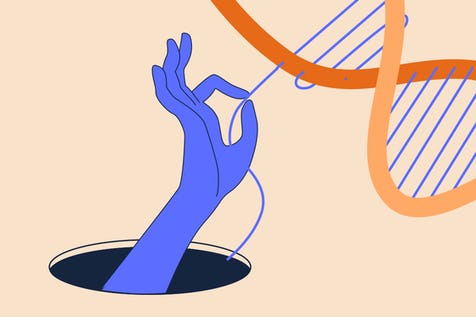Planning for pregnancy? The journey could take more or less time depending on your health conditions and lifestyle. Getting familiar with the fertile window and being able to identify the precise time of ovulation is a great place to start. It is estimated that a woman will ovulate about 500 times over a reproductive lifetime (1). This represents approximately 35–40 years (1)! From the first period to menopause, menstrual cycles affect general health, mood, and daily living quality.
One of the goals behind this sophisticated, naturally designed mechanism is to provide for ova and prepare an optimal environment for an eventual embryo implantation (2). But we tend to forget that the most common signs around ovulation are triggered by hormones. The logic behind these mechanisms is fascinating.
How do hormone fluctuations explain the signs that affect you when ovulation is coming or has occurred? This article will explore this point further.
It is estimated that a woman will ovulate about 500 times over a reproductive lifetime
Which physical signs can help me to detect my most fertile time?
Ovulation can impact your vaginal discharge
When ovulation is approaching, discharge near the cervix known as cervical mucus increases and transforms into a raw egg white like consistency, under the effect of estrogen. This fertile quality cervical mucus helps sperm swim up the vaginal canal, and makes sexual intercourse easier as it works as a lubricant (3).
Hormones also explain the increased sexual desire near ovulation
Not only the desire goes up, but women also feel more attractive (4). Estradiol - one of the three natural forms of estrogen- is secreted by ovaries, and its levels increase by more than 800% over a 3–4 day period at midcycle. Estradiol seems responsible for the increase of responsiveness and sexual desire in women at the midcycle peak, whereas progesterone shows a negative effect (5,6).
Breast tenderness: your breasts go through a cycle too
The hormones your body produces after ovulation may make your breasts tender to the touch, painful, swelling, or sensitive, sensations resolving once your period starts (7). At the beginning of the follicular phase, progesterone levels are low. Most women don't encounter breast pain during that period. But when ovulation is approaching, estrogen, which strongly stimulates the development of milk ducts in breasts in preparation for potential pregnancy, rises (8). After ovulation, estrogen levels drop down while progesterone takes the stage until period. In the right levels, progesterone has a balancing on estrogen and prevents many signs such as breast tenderness. When there is an excess of estrogen, or when progesterone is low, breast pain is often increased and may cause swelling and nipple tenderness (9).
Understanding why your body temperature increases
During the first part of the menstrual cycle, the body temperature remains in the lower range until approximately 1 day before ovulation, when it reaches its lowest point. After ovulation,the corpus luteum begins to secrete progesterone (2) and causes body temperature to get to its higher range (2, 10). It returns then to its lower range within 1–2 days before, or just at, the onset of menstrual bleeding (2). Even though there is a clear pattern - low range before ovulation and higher range afterwards - it is worth noting that body temperature continues to vary within those ranges (10) and can be affected by external factors such as lack of sleep and alcohol consumption.
How is the Mittelschmerz pain related to your ovulation?
Over 40% of women of reproductive age experience ovulation pain almost every cycle, also known as mittelschmerz pain (from German: middle pain). This pain can range from being a slight twinge to a sharp cramp, or even a pulsating muscular pain felt in the lower abdomen. It is generally felt near the ovaries on the same side as the developing follicle. This ovulation pain coincides with the peak in plasma luteinizing hormone (LH) levels when the follicle is enlarging and has not yet ruptured, which increases ovarian perifollicular smooth muscle contractility, which may explain the production of pain (7,11).
Did you know that?
You have probably already heard more or less of the signs mentioned above. But what about the following one?
Just before ovulation, the cervix moves up higher, becomes softer to the touch, and opens slightly. This happens under estrogenic influence. When you’re not in the fertile stage of your cycle, the cervix is lower, harder, and more closed, due to progesterone influence (12).
Paying attention to ovulation signs can be a helpful way to predict you will ovulate. But, because signs vary, monitoring symptoms alone isn’t always easy to forecast ovulation. The inne minilab can help you to predict and confirm your time of ovulation by tracking your progesterone levels throughout your cycle. The app is equipped with a symptom-tracking feature, making it easier to log your observations. This enables you to observe patterns and understand how your symptoms are correlating to the current state of your cycle.
References
1. Pacific Fertility Center, 10 Things You May Not Know About Your Fertility, article consulted on Nov. 25th 2020 and available from https://bit.ly/2V5ihik
2. Su HW, et al. Detection of ovulation, a review of currently available methods. Bioeng Transl Med 2017; 2(3):238-46.
3. Takeshi Kurita. Female Reproduction, in Encyclopedia of Reproduction (Second Edition), 2018. Cervical Mucus. Available from: https://bit.ly/368L4ZI
4. Catena TM, et al. Do women's faces become more attractive near ovulation? Horm Behav 2019; 115:104560. Available from: https://bit.ly/33hLqvp
5. Roney JR, Simmons ZL. Hormonal predictors of sexual motivation in natural menstrual cycles. Horm Behav 2013; 63(4):636-45.
6. Cappelletti M, Wallen K. Increasing women's sexual desire: The comparative effectiveness of estrogens and androgens. Horm Behav 2016; 78:178-93.
7. Gross BA. Natural family planning indicators of ovulation. Clin Reprod Fertil 1987; 5(3):91-117.
8. Mauvais-Jarvis P, et al. Antiestrogen action of progesterone in breast tissue. Breast Cancer Res Treat 1986; 8(3):179-88.
9. Kimberly Holland. Signs and Symptoms of High Estrogen. Healthline 2018. Article consulted on Nov. 25th 2020 and available from: https://bit.ly/3fCrxUB
10. Weschler, T. (2016). Taking charge of your fertility: The definitive guide to natural birth control, pregnancy achievement, and reproductive health, pages 62, 94
11. Brott NR, Le JK. Mittelschmerz In: StatPearls [Internet]. Treasure Island (FL): StatPearls Publishing; 2020.
12. Parenteau-Carreau S, Infante-Rivard C. Self-palpation to assess cervical changes in relation to mucus and temperature. Int J Fertil 1988; 33 (Suppl):10-6.









